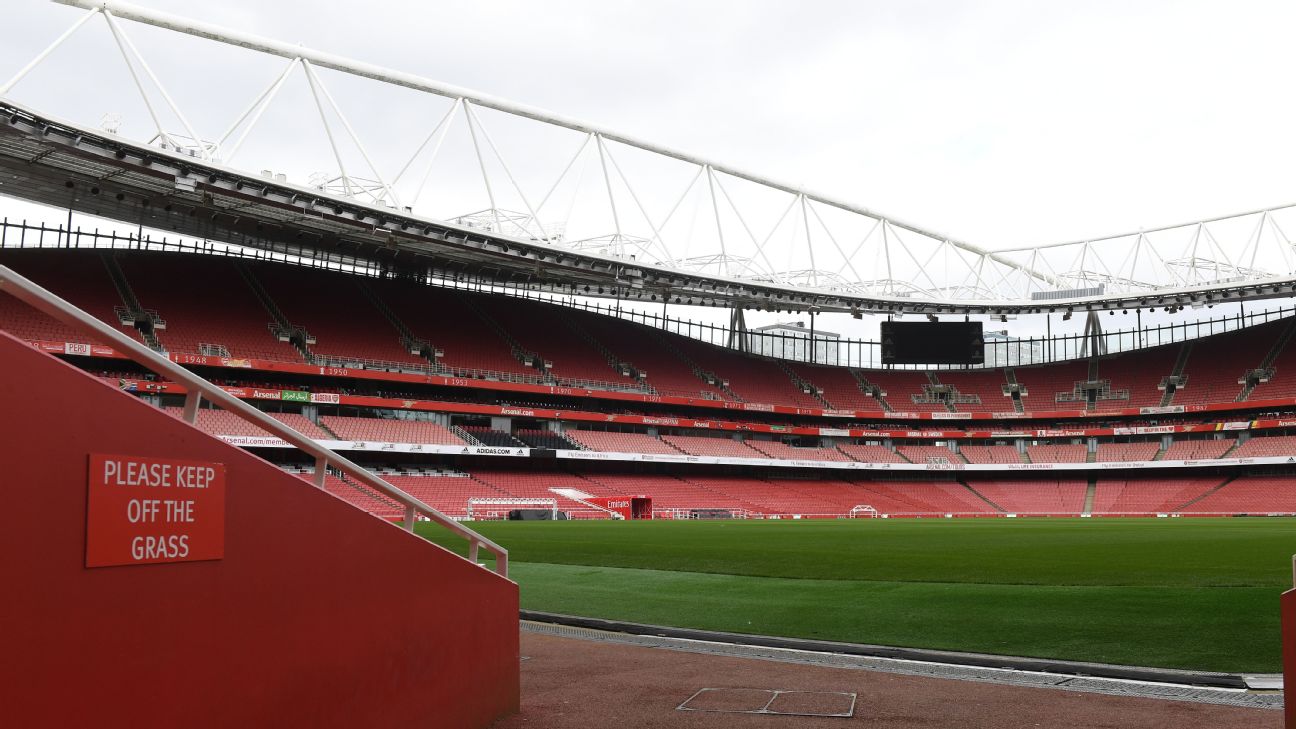Products You May Like
Football behind closed doors sounds simple: Get the teams in, keep the fans out and limit the other attendees to those people who simply have to be there. But with the sporting world as a whole facing the reality of returning to action without spectators — once coronavirus lockdown measures are sufficiently relaxed — even playing in empty stadiums will be a complex issue.
In England, While a resumption date for the Premier League has not been mooted, the Football League is planning to return on June 6, which would be 12 weeks after football in the country was suspended. If, as has been suggested, the aim is to finish the season within 56 days of that date, we are talking about 541 games across the top five tiers — including the National League — of the English pyramid.
There is no expectation within the game that supporters will be allowed inside stadiums to watch their team play, but even though the stands will be empty, a professional football match requires people to do certain jobs and fulfill key roles. Up to 200, in fact.
“People don’t realise just how many essential staff must be at a football match in order for it to go ahead,” a senior figure at a leading EFL club told ESPN. “If, or when, football returns, you are looking at between 150 to 200 people inside a stadium, so it won’t simply be a case of 22 players and the match officials.
“For example, we would need six safety officers, even for a closed-doors game. At a bigger Premier League stadium, you would need to multiply that five times, just to cover all the basic requirements. So when football does return, social distancing measures and numbers allowed for public gatherings will have to be much less stringent than they are right now.”
– Stream new episodes of ESPN FC Monday-Friday on ESPN+
- Stream every episode of 30 for 30: Soccer Stories on ESPN+
One Championship club has given ESPN a full rundown of the minimum number of people it would expect at a game behind closed doors, and it amounts to 166. In the Premier League, rights-holder media alone would see that number leap toward 300.
A top-flight club source told ESPN that an average of 120 broadcast media are accredited for home games. The people you don’t see — riggers, electricians, technicians, producers, camera crew and sound engineers — are just as important, if not more so, as the reporter or commentator; they will all need to be inside a stadium once football gets the green light to resume.
As for the teams, the modern-day game means we are talking about a lot more than two teams of 11, plus two managers and three match officials.
To start, the two squads have 18 players, including substitutes, while the manager has an assistant and other coaches. The refereeing crew, meanwhile, comprises a referee and two assistants, plus a fourth official and refereeing assessor in the stands.
You cannot play a game without a physiotherapist, and no Premier League team has just one anyway. The kitman is another essential backroom staff member. And there also is a team of analysts that produces video data for clubs; as many as six members occupy seats in the Manchester City press box due to a lack of space on the bench.
Every club has a doctor; although if efforts are made to cut attendees to an absolute minimum, one on duty might suffice. Legally, though, there would be a necessity for at least four paramedics and an ambulance driver. With police also required, emergency services could be stretched.
Ball boys and ball girls might seem like an extravagance, but if the match ball ends up in Row Z of an empty stand, can you imagine David De Gea or Andy Robertson climbing the stairs to retrieve it? A medium-sized ground would require a team of 12 on the sidelines, with more needed at arenas the size of Old Trafford, the London Stadium or Tottenham’s new ground.
Similarly, ground staff are required to ensure playing surfaces are in peak condition before, during and after games. Championship clubs can get by with four, but Premier League teams might employ as many as 20 people, armed with pitchforks and rollers.
Off the pitch, the list goes on: A club secretary liaises with match officials and oversees all matchday operations, and then there are electricians, maintenance workers, cleaners and catering staff. Digital advertising boards are used for televised games, and a technician must ensure they are running properly. A trivial job? Not when the game is on television and sponsors are paying for the right to be seen.
And let us not forget VAR, which is a necessity for all Premier League games. A source told that ESPN that, under normal circumstances for a seven-match day, approximately 40 people would be needed. Beyond that, the smart technology behind the Hawkeye system that is used for goal-line reviews requires monitoring to ensure seven cameras in each goal work properly.
All of the aforementioned people will be monitored and guided by the stewards and officials, whose job it will be to keep the stadium secure — internally and externally — from fans who might try to sneak in.
So while the away team’s bus driver might have to accept sitting outside, many staff cannot realistically be stood down for a closed-doors game. Even when football returns and the stands are empty, hundreds must be on hand for games to go ahead.
